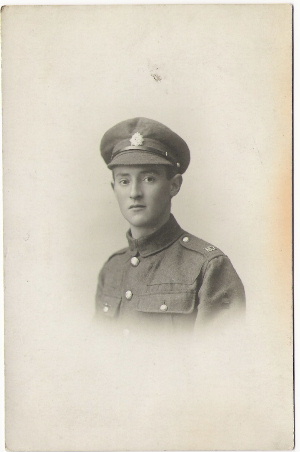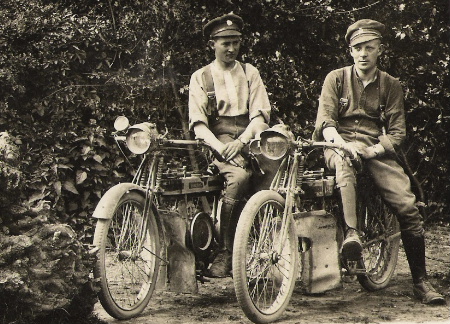Army Service Corps attached 51 Heavy Brigade, Royal Garrison Artillery.
Awarded the Military Medal in the London Gazette of 16 July 1918.
Heyworth was a native of Burnley, Lancashire.
 Whilst in the Army Service Corps, James Robinson was attached to the 51st Brigade of the Royal Garrison Artillery (RGA). These heavy artillery pieces relied on motorcycle despatch riders as a main means of communication between HQ, the batteries and front line units. Particularly as telephone wires were frequently destroyed by German shelling. He was awarded the Military Medal for “Bravery in the Field” in 1918. This appears alongside other ASC soldiers and gunners from the RGA in the May 4th Army Orders, and was officially gazetted on 16th July 1918. From the 6 August1918 he was transferred for the “Benefit of the Service” from the Army Service Corps MT branch to the Royal Engineers as a “Motorcyclist/despatch rider” and attached to the 51st Brigade RGA. The now Sapper Heyworth was finally demobilized on 15th March 1919.
Whilst in the Army Service Corps, James Robinson was attached to the 51st Brigade of the Royal Garrison Artillery (RGA). These heavy artillery pieces relied on motorcycle despatch riders as a main means of communication between HQ, the batteries and front line units. Particularly as telephone wires were frequently destroyed by German shelling. He was awarded the Military Medal for “Bravery in the Field” in 1918. This appears alongside other ASC soldiers and gunners from the RGA in the May 4th Army Orders, and was officially gazetted on 16th July 1918. From the 6 August1918 he was transferred for the “Benefit of the Service” from the Army Service Corps MT branch to the Royal Engineers as a “Motorcyclist/despatch rider” and attached to the 51st Brigade RGA. The now Sapper Heyworth was finally demobilized on 15th March 1919.
However, James Robinson was a member of the “Fire Guard” during the Second World War, whose job it was to check buildings for fire risk and act as fire prevention officers in Burnley and Padiham.
Born: Burnley 5 June 1894 Religion: Weslyan Address: 222, Padiham Road, Burnley. Occupation on enlistment: Butcher and motorcyclist (the latter looks to have been written in later) Height: 5ft 9” Weight: 130 lbs Medals = Military Medal, British War Medal and Allied Victory Medal The Fourth Army in 1918. The 51st Brigade RGA was part of the British Fourth Army whilst on the Western Front, under the overall command of General Rawlinson. By looking at the activities of 4th Army and the 51st Brigade RGA it is possible to set James Robinson’s actions within the wider context of the wars final year.
 One of the batteries in the 51st Brigade RGA was 138, known as the “Hampstead Heavies”. They were equipped with the heavy 60 pounder guns and in March 1918 were attacked during the German offensive in the Remigny area. During the retreat the men and horses covered 40 km in just three days. By April they were in position near Amiens, holding a position for 2 weeks under heavy German shelling. After a refit in late April they rejoined the line in May 1918 ready for the 4th Army counterattack which finally took off in August. The Amiens offensive pushed the German forces back until the Armistice in November.
One of the batteries in the 51st Brigade RGA was 138, known as the “Hampstead Heavies”. They were equipped with the heavy 60 pounder guns and in March 1918 were attacked during the German offensive in the Remigny area. During the retreat the men and horses covered 40 km in just three days. By April they were in position near Amiens, holding a position for 2 weeks under heavy German shelling. After a refit in late April they rejoined the line in May 1918 ready for the 4th Army counterattack which finally took off in August. The Amiens offensive pushed the German forces back until the Armistice in November.
(Photo's and details courtesy of his grandson James Heyworth)